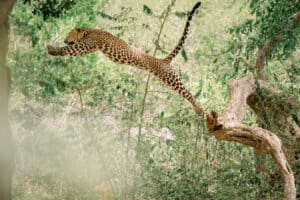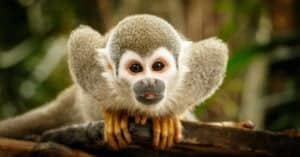Monkeys are popular figures both in the wild and in media, such as the mischievous capuchin in “Night at the Museum” to the fictional lover and fighter, King Kong. Because of their fun and intelligent personalities, monkeys have captured the attention of humans for centuries! But did you know there are over 267 known monkey species? Evolving from the prosimians during the Oligocene Epoch, each monkey species that roams the Earth offers unique traits and physical features. Let’s take a closer look at nine of the most unique monkeys from around the world!
From mischievous brown capuchin monkeys of South America to the coquettish proboscis monkeys of Borneo, these extraordinary creatures walk a thin line between comforting familiarity and alien obscurity. Nevertheless, they showcase the fascinating variety and astonishing adaptations found in the primate world. Now, read on to discover today’s top unique monkey species!
Brown Capuchin (Sapajus apella)
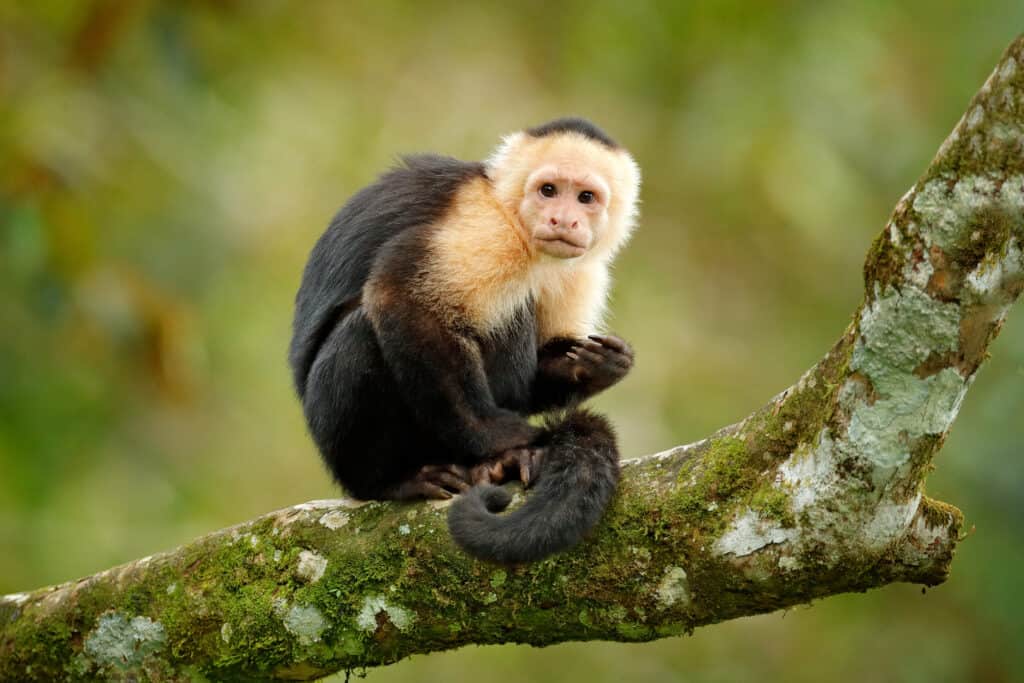
The brown capuchin has many names, including tufted capuchin, black-capped capuchin, or pin monkey. This species is considered one of the most unique monkeys from around the world!
©Ondrej Prosicky/Shutterstock.com
All monkeys can be divided into two main groups: the old world and the new world. This classification divides the monkeys that belong to a single family and the monkeys that are one of five new-age families. Capuchins, found throughout the forests of Brazil and the Amazon, are known as the most intelligent “new world” monkeys. This species stands out for its remarkable problem-solving skills, tool usage, and curiosity. Interestingly enough, they have one of the largest brain-to-body size ratios out of any primate other than humans! Capuchins often appear in movies and TV shows because of their advanced ability to learn and remember new tricks. Some are even service animals!
Mandrill (Mandrillus sphinx)
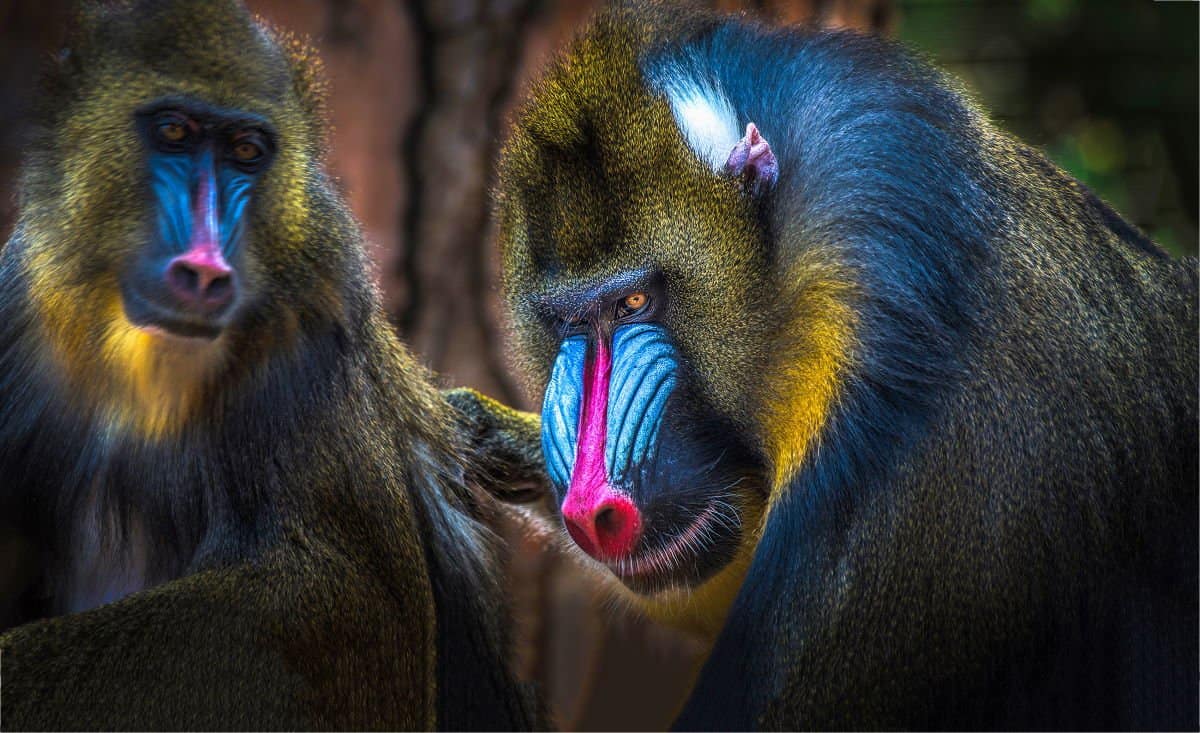
Mandrills are the largest monkeys in the world. Males weigh anywhere between 70 to 119 pounds, while females weigh about 27 pounds.
©Nikolay 007/Shutterstock.com
Known predominately for their striking colors, the mandrill is one of the most physically alluring monkey species. Classified as a type of baboon, this ground-dwelling monkey features a vibrant red, white, and blue muzzle. Mandrills are also characterized by their hairless, colorful butts! This comes from microscopic collagen fibers in the skin, which are arranged specifically to reflect blue light. Scientists believe that mandrills use their flashy butts to attract mates, intimidate rivals, and display their social status. This is because the more testosterone a mandrill develops, the more vibrant its colors become. As a result, this makes them more attractive to females and more threatening to weaker — or less colorful — males.
Emperor Tamarin (Saguinus imperator)

This monkey is named after the late German Emperor Willhelm II, widely known for his ostentatious mustache.
©iStock.com/Jharpy
Boasting a distinctive long white “mustache,” the Emperor Tamarin is a small monkey species native to the Amazon Basin. These highly social animals are widely known for their playful nature and tight-knit family groups. However, they are also known for their tongue-flicking behavior, which is indicative of several things. First, Emperor Tamarins typically flick their tongues to show when they are angry, displeased, or annoyed. They use tongue-flicking to intimidate predators and other potential dangers in their environment. Sadly, this tactic does not seem to be helping their odds. As of 2024, this monkey species is classified as near-extinct. Moving in a different direction, though, this flashy tongue behavior was also observed in nursing mothers. Scientists believe they use it as a means to seek out help with their infant from nearby males.
Spix’s Night Monkey (Aotus vociferans)

Unlike most other primates, male Spix’s naturally take on the majority of the parental care of their young, typically only giving the baby to the mother when it is time for them to feed.
©Korovko Gleb/Shutterstock.com
The Spix’s night monkey is a small monkey species that belongs to the only nocturnal genus of New World primates. The name “night monkey” was coined due to their unusual nocturnal behavior. This species is the only truly nocturnal monkey in the world. The only exception is the subspecies of Azara’s night monkey — a cathemeral species that has irregular activity patterns throughout the day and night. Large eyes optimized for night vision characterize Spix’s. Their loud, distinct vocalizations also set them apart from other species. Additionally, they have longer arms than legs, a feature that allows them to leap and jump much farther than other monkeys.
Otherwise known as the noisy night monkey, Columbian gray monkey, and Spix’s owl monkey, this species is native to South America. Specifically, they can be found throughout the forests of Brazil, Colombia, Ecuador, and Peru. Classified in the “least concern” category by the International Union for Conservation of Nature, Spix’s night monkeys persevere as one of the few species that can survive in highly disturbed environments. This includes the fragmented or selectively logged forests these monkeys generally live within.
Greater Slow Loris (Nycticebus coucang)

The greater slow loris is an omnivorous monkey species that relies on the consumption of small animals, fruit, tree sap, palm nectar, and other vegetation to survive.
©inzyx/iStock / Getty Images Plus via Getty Images
The Greater Slow Loris monkey is found primarily in Indonesia, West Malaysia, southern Thailand, and Singapore. Along with its tiny frame, this slow-moving species stands out due to its venomous bite — a rare trait that is not commonly found in primates. Considering they are one of the few venomous mammals in the world, it is shocking to realize that their venom is so potent that it can cause anaphylactic shock or even death in humans! This Asian monkey species also has a few other quirky traits that make it stand out as one of the most unique monkeys from around the world, including the ability to hibernate. Sadly, as a result of deforestation and the illegal pet trade, the Greater Slow Loris is classified as an extremely vulnerable monkey species.
Proboscis Monkey (Nasalis larvatus)

Otherwise called
Nasalis larvatus, which roughly translates to “nose like a mask”, it is clear why this monkey species carries this name.
©kjorgen/ via Getty Images
The Proboscis monkey is an Old World species that is endemic to the island of Borneo. Unforgettable thanks to their large facial appendage, this unique monkey species features a large, fleshy, protruding nose. This adaptation serves as an echo chamber to amplify their sound, making males more attractive to prospective female mates. Similarly, they use the size of their noses to intimidate rival males. Sadly, habitat loss and excessive hunting have led to the critical endangerment of the Proboscis monkey population.
Bald Uakari (Cacajao calvus)
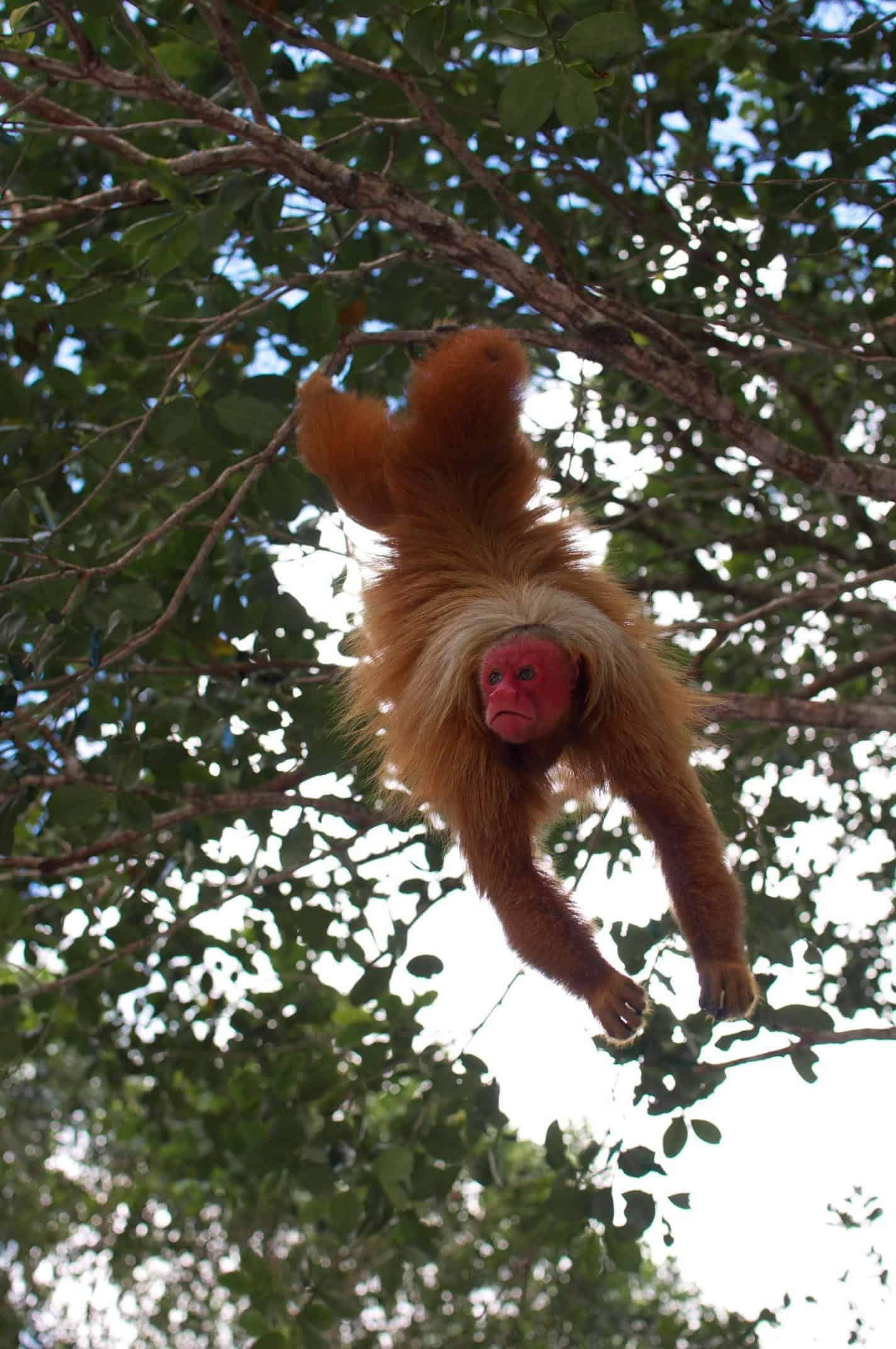
There are four subspecies of bald uakaris: white, red, novae, and ucayali.
Native to the Amazon rainforest, these unusual primates are hard workers — known for playing a critical role in seed dispersion throughout their habitat. The bald uakari is easily recognized for its bald head and vibrant red face. Scientists believe the main cause of this facial feature is malaria, which is a widespread ailment throughout the Amazon. Other explanations for this standout characteristic are a thinner epidermis, larger vascular capillaries, and the absence of melanin granules in their face.
Snub-Nosed Monkey (Rhinopithecus bieti)
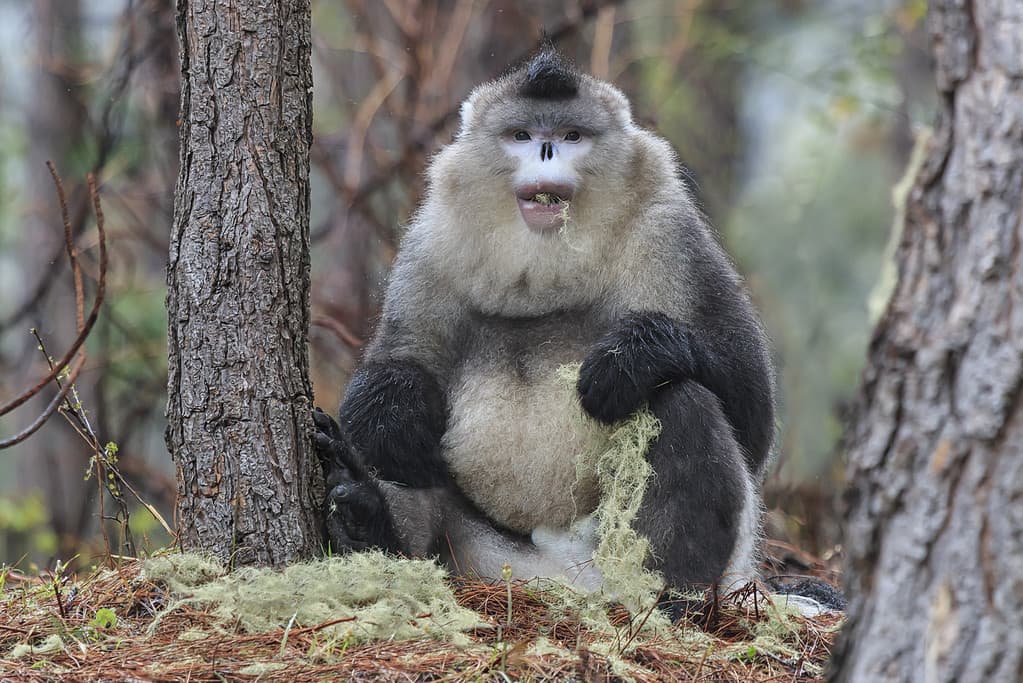
Current estimates suggest there are only about 15,000 snub-nosed monkeys left in the wild today.
©outcast85/iStock / Getty Images Plus via Getty Images
No, it isn’t Photoshop. The black and white snub-nosed monkey really does look like that! Located deep in the mountainous forests of China, they live at a higher altitude than any other primate species (besides humans). They are also widely known for their unique facial structure. Snub-nosed monkeys lack nasal bones, giving them a unique profile and distinct appearance. Nevertheless, this adaptation is for a reason! Their jarring, inward-facing noses actually help prevent frostbite in the extreme cold. This feature — coupled with their thick coats and furry hands — allows them to survive in temperatures far below freezing for several months!
Pygmy Marmoset (Cebuella pygmaea)

The pygmy marmoset is also called the finger monkey, pocket monkey, little
lion
, or dwarf monkey.
©iStock.com/Edwin_Butter
The pygmy marmoset is the world’s smallest monkey. Averaging 5.1 inches and a weight of 3.5 ounces, this monkey species is certifiably tiny! Found in the Amazon rainforest, as well as the forests of Brazil, Colombia, Ecuador, Peru, and northern Bolivia, this primate is widely known for its impressive agility and acrobatic skills. For instance, they can easily leap over 15 feet from a stationary position. If that doesn’t impress you, pygmy marmosets can also rotate their heads up to 180 degrees!
The photo featured at the top of this post is © diegograndi/iStock via Getty Images
Thank you for reading! Have some feedback for us? Contact the AZ Animals editorial team.




